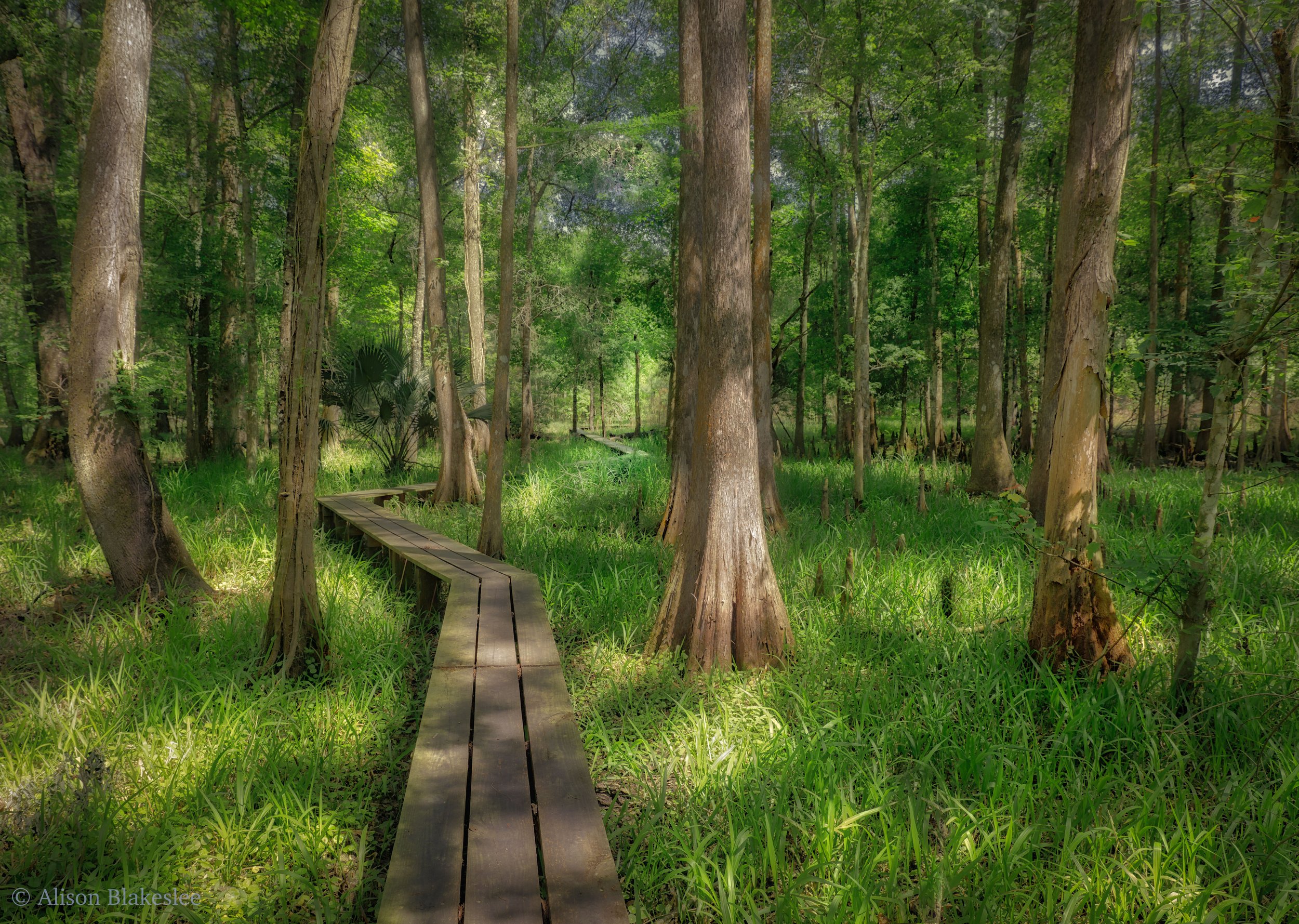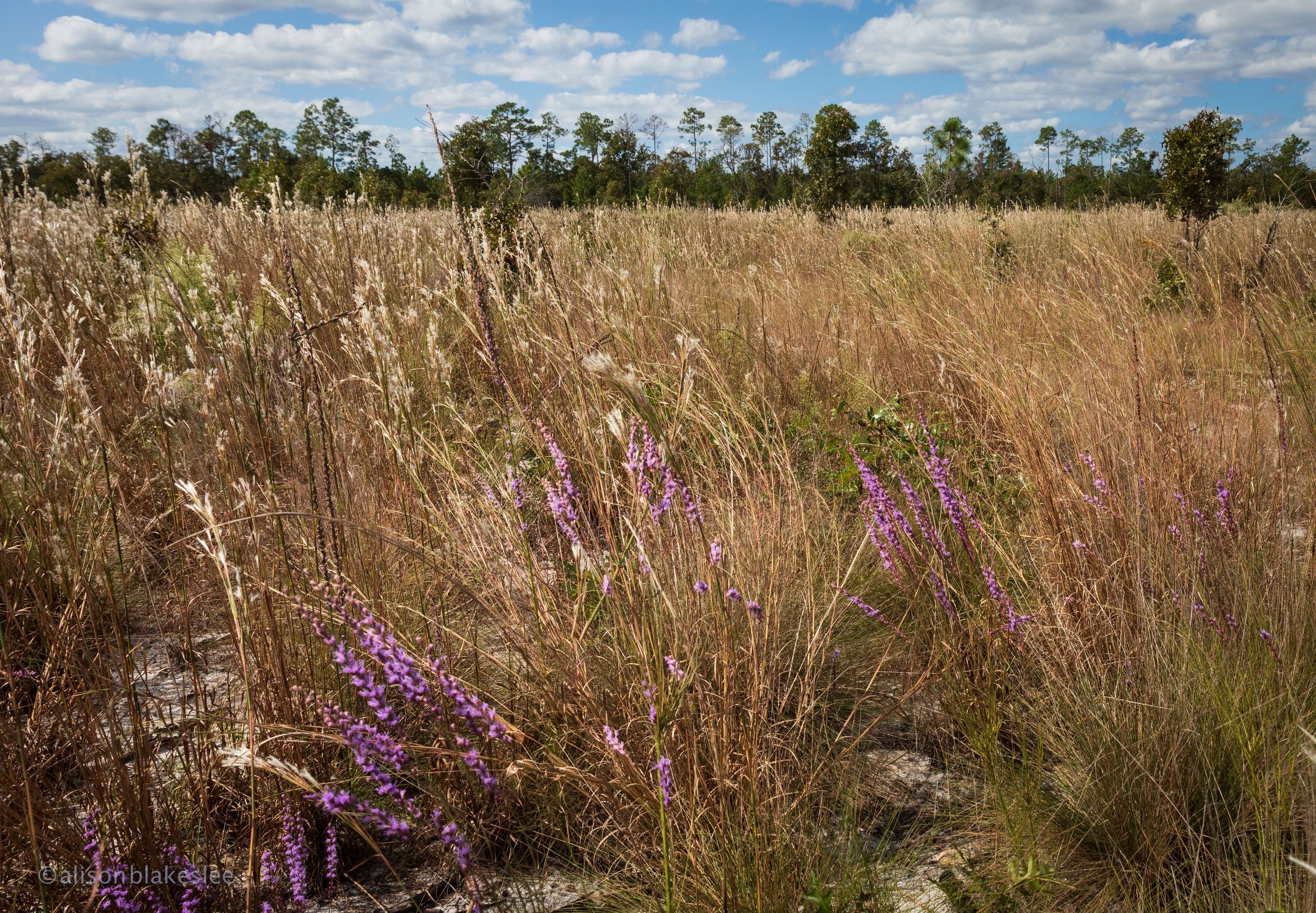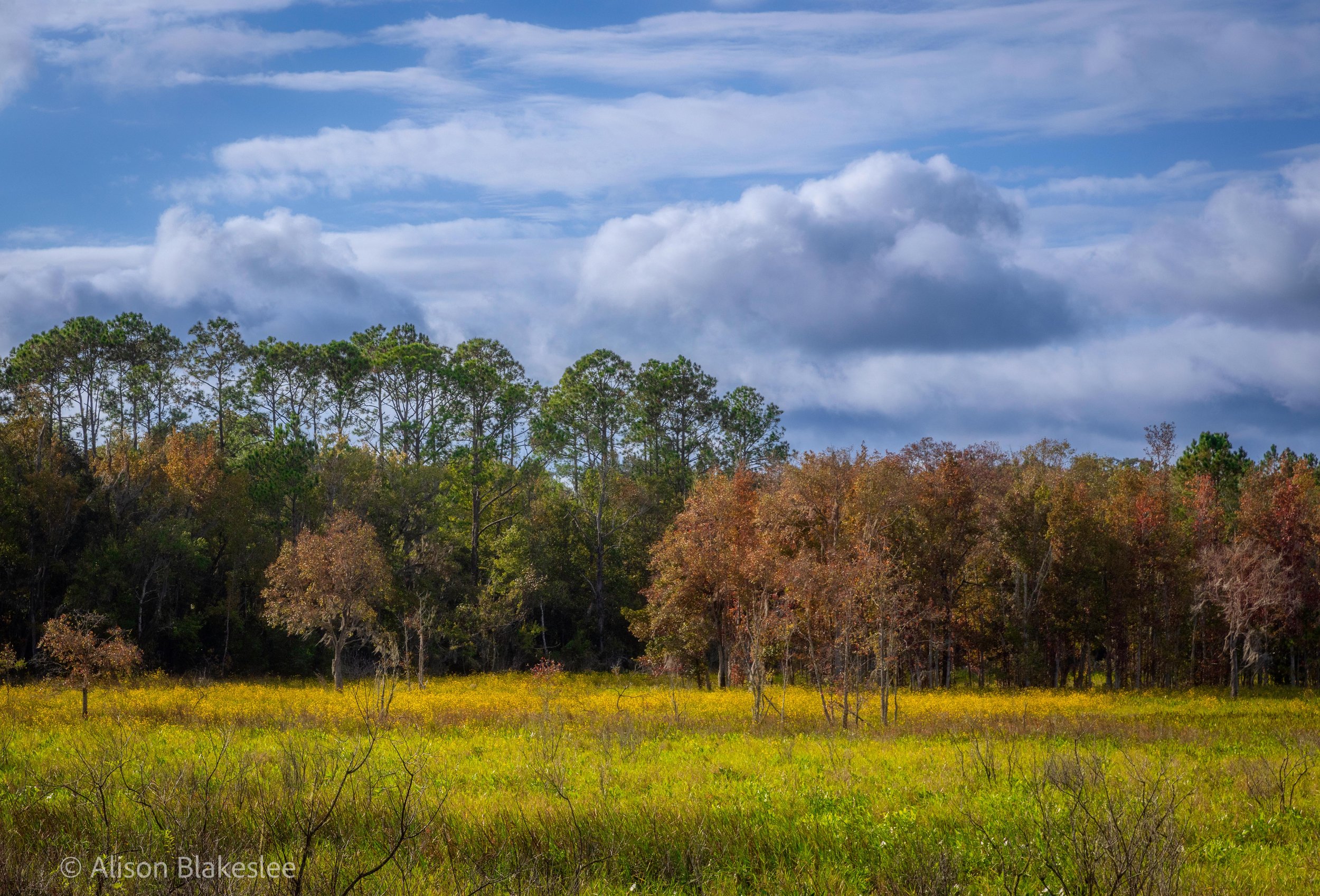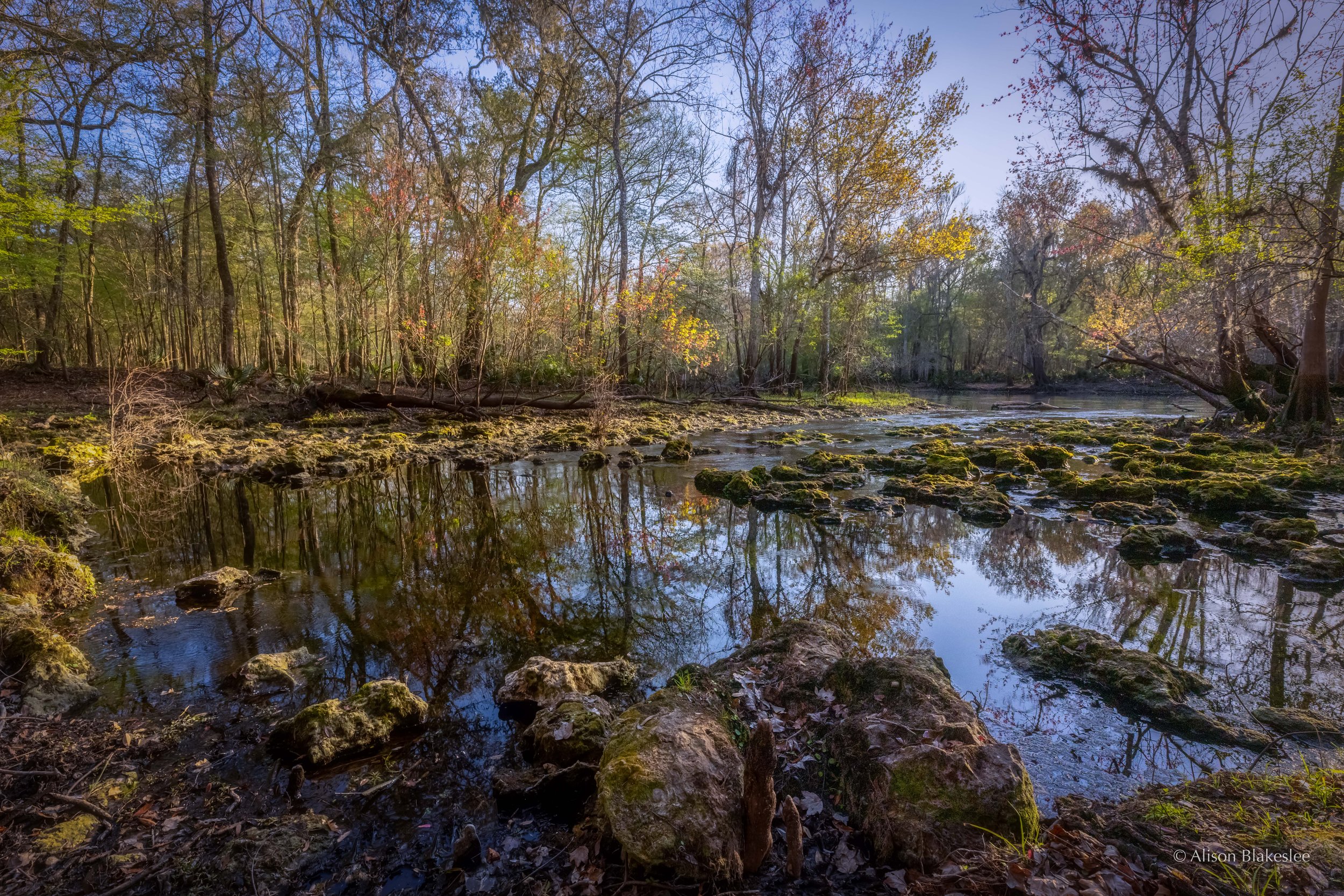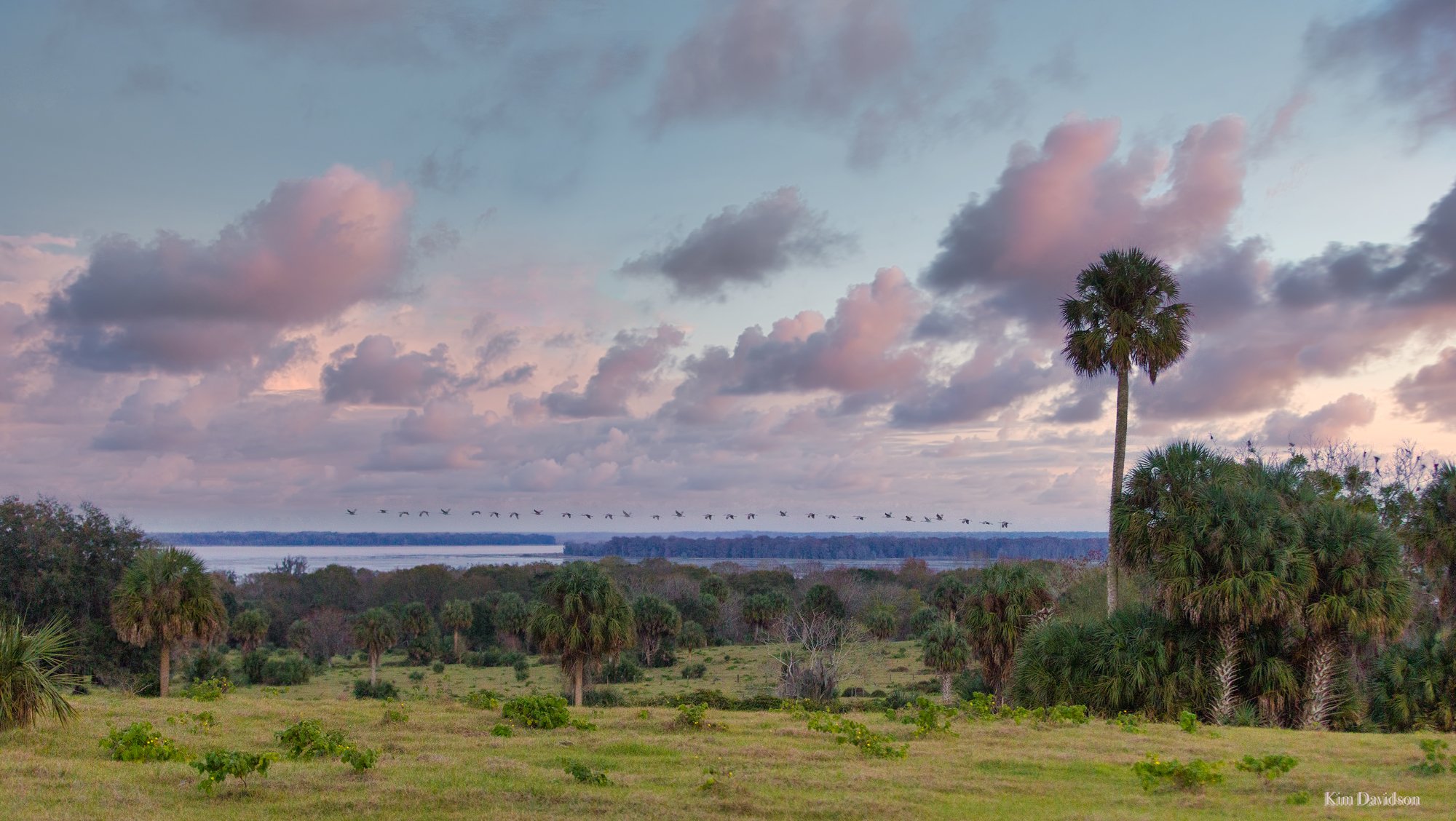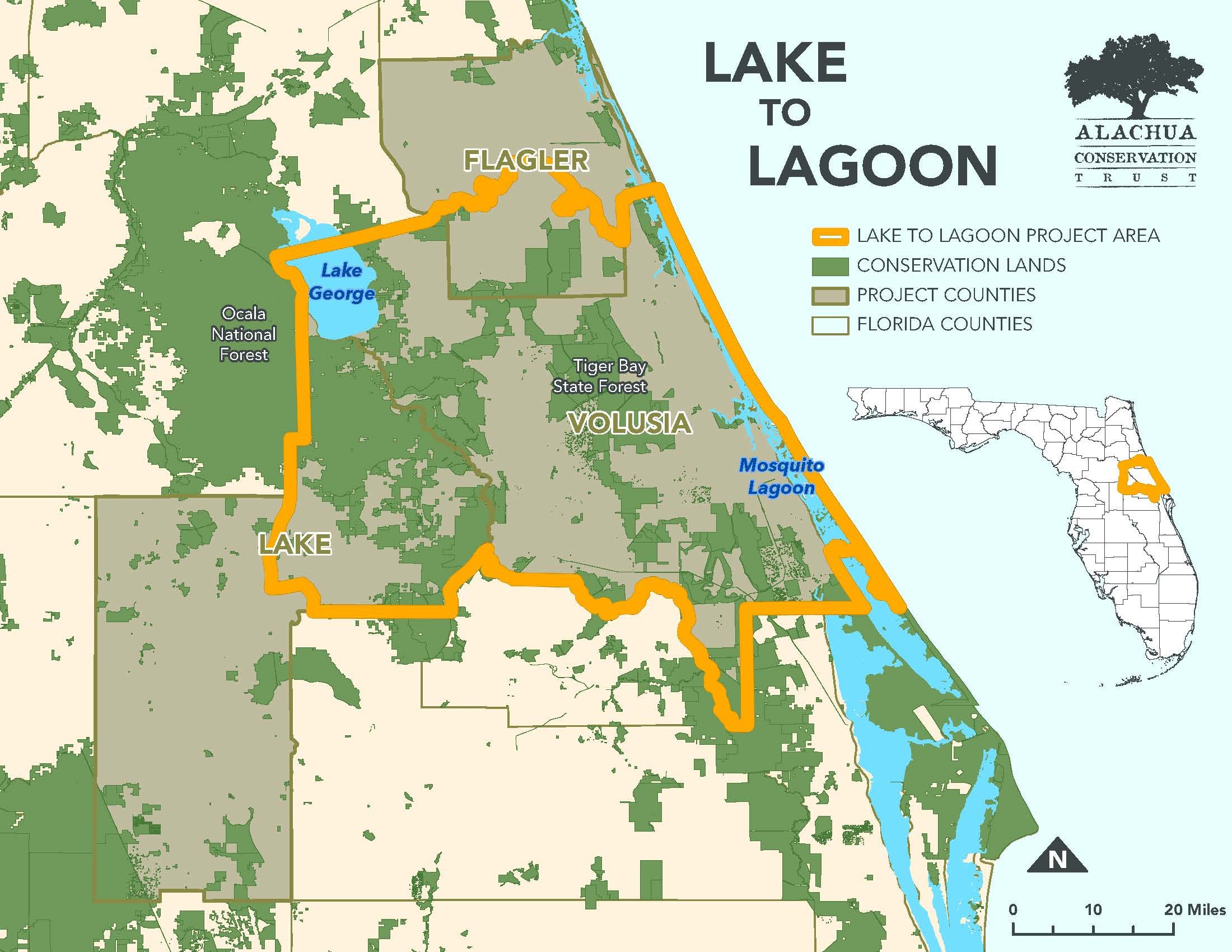Habitat Restoration & Management
Saving land is just the first step. Purchasing land for conservation or placing conservation easements on private property ensures that those lands are protected forever. ACT then works with its partners and landowners to continue to maintain the land in ways that make conservation and restoration a priority. From coastal sea turtle habitat to fire-based longleaf pine flatwoods, ACT dedicates each day to protecting, conserving, and restoring land for current and future generations of humans and wildlife.
Here are some of the ways that ACT helps manage protected lands:
ACT currently manages more than a dozen nature preserves and parks that are open to the public for recreation.
ACT and its partners at Conservation Burial, Inc. are setting the standard for natural burial with Prairie Creek Conservation Cemetery.
ACT and its partners are planting longleaf pine and native grasses on conservation properties across North Central Florida to help restore habitat for keystone species.
ACT’s Ocala Longleaf Implementation Team / Gulf to Atlantic Restoration Partnership and its partners assist public agencies and private landowners with improving longleaf pine habitat across the Southeastern United States.
Through the USDA-NRCS Regional Conservation Partnership Program (RCPP), ACT is able to connect agricultural landowners with cost-share funding for land management practices that reduce environmental impacts.
Learn more about ACT’s management and restoration activities below.
ACT Parks & Preserves
Since its inception in 1988, ACT has facilitated the conservation of 58,500 acres and directly acquired more than 25,500 acres of Florida land. ACT manages over 6,000 acres of land as nature preserves and parks, some of which are open to the public for recreation such as hiking, biking, kayaking, swimming, and nature observation. Due to the ecological sensitivity of some areas, not all properties protected by ACT are open to the public.
More on all of our protected properties - including the history, ecology, and public access - can be found by clicking on the button below.
Photos by Kim Davidson and Alison Blakeslee.
Prairie Creek Conservation Cemetery
Photos courtesy of Conservation Burial, Inc.
Conservation burial begins with the choice for a natural burial where embalming is not permitted, there are no vaults, and everything used in the burial is biodegradable. Our partners at Conservation Burial, Inc (CBI) take it a step further by managing the land with conservation in mind.
As a result of this partnership between ACT and CBI, Prairie Creek Conservation Cemetery (PCCC) officially opened in 2010 as the fourth of now ten conservation burial grounds in the United States. The cemetery makes up 94 acres of ACT's 606-acre Prairie Creek Preserve. The cemetery is owned and operated by CBI, who works alongside ACT to manage, protect, and restore the land for all. This includes placing a conservation easement on the cemetery land that permanently protects it from development.
Each and every burial at PCCC is unique and special. All graves are dug and prepared by hand by community volunteers. Family and friends of the deceased can participate as much or as little in the burial process as they wish. Visitors often decorate the graves of their loved ones with natural and biodegradable materials found in the cemetery. All those who come to have a natural burial or visit the cemetery contribute to the land as a living memorial and to our community’s legacy of conservation.
As both a cemetery and nature preserve, visitors can connect with nature in new and meaningful ways through its vibrant, diverse ecosystem with trails for visitors to hike and explore 365 days a year. To learn more about PCCC and natural burial, please contact the staff at Conservation Burial, Inc. or click on the button below.
Conservation Burial, Inc.
Address: 7204 SE County Road 234
Gainesville, FL 32641 (office located around back of building)
Office Phone: (352) 336-5910
After Hours Phone: (352) 317-7307
Restoring Longleaf Pine & Native Grasses
In addition to its land restoration efforts through the OLIT Program, ACT works with several key partners to restore habitat by planting longleaf pine and native grasses on its managed conservation lands. Historically, the Southeastern U.S. was dominated by longleaf pine boasting 92 million acres of pine forest prior to 1870. On its own, Florida consisted of 23 million acres of pine forest. From 1870 to the 1930s, due to the availability of inexpensive land and the introduction of the railroad, old growth pine forests were heavily timbered, reducing the acreage in the Southeastern U.S. to 3% of its original population. Today, only 13,000 acres of old growth longleaf pine remain in this region. Through restoration efforts by conservation organizations, private landowners, and state and federal entities, longleaf pine populations are estimated to be 5 million acres across the Southeast.
But there is still much work to be done. The sandhill ecosystems where longleaf pine thrive are home to a wide diversity of plant and animal species, including the federally-endangered gopher tortoise, eastern indigo snake, and red-cockaded woodpecker - all keystone species that other species depend upon for survival. Due to a significant loss of habitat, native plants and animals are disappearing.
Support from grantors, private donors, landowners, volunteers, and corporate sponsors helps ACT in its effort to restore sandhill habitat and longleaf pine ecosystems. Below are highlights of several key partners:
The Arbor Day Foundation and Partnership for Gulf Coast Land Conservation has awarded grant funding to ACT to plant up to 1 million trees. By the end of 2023, ACT planted 388,750 trees with the help of 40 public and private partners.
Each year, Swamp Head Brewery and Solar Impact host the annual Tree Fest event in April where drinking beer helps plant a tree at Little Orange Creek Nature Preserve. To date, 695,216 have been planted through this special event.
Our community is also a key partner in this effort. From November through February, ACT hosts public volunteer events to plant 1-year-old longleaf pine seedlings and native grasses on our preserves. With the help of volunteers, longleaf pine trees and wiregrass have been planted at Prairie Creek Preserve, Fox Pen Preserve, and Santa Fe Springs Preserve.
Ocala Longleaf Implementation Team (OLIT)/Gulf to Atlantic Restoration Partnership (GARP)
With support from the National Fish and Wildlife Foundation's Longleaf Stewardship Fund, ACT is currently working with personnel from multiple state and federal agencies and volunteer landowners with the North Florida Prescribed Burn Association (NFPBA) to achieve more longleaf habitat restoration on private and public lands.
Click on the image below to play a short video of a prescribed burn conducted by ACT and its partners:
Video credit: Prescribed burn by Kim Davidson
Established in 2018, the goals of the OLIT are to:
Provide one-on-one training and education to private landowners learning to implement prescribed burning on their land;
Assist private landowners with acquiring and planting longleaf pine seedlings on their land; and
Provide staffing support to the North Florida Prescribed Burn Association to conduct prescribed fire on private lands and outreach to new landowners.
The team also assists with habitat restoration projects in the Ocala National Forest and at the Camp Blanding Joint Training Center, which will directly benefit populations of red-cockaded woodpeckers, gopher tortoises, and northern bobwhite quail.
Over the next year, OLIT will be transitioning into the Gulf to Atlantic Restoration Partnership, which blends together multiple programs and working areas focused on longleaf pine habitat restoration across the Southeastern United States into a regional program focused on landscape-scale restoration.
If you are a private forest landowner interested in longleaf restoration or managing with prescribed fire, contact ACT or the NFPBA today.
Regional Conservation Partnership Program (RCPP)
ACT increasingly engages the power of public-private partnerships to implement regional conservation goals, particularly that of the USDA Natural Resources Conservation Service (NRCS) Regional Conservation Partnership Program (RCPP). The RCPP is part of the Farm Bill, and is a large and well-funded federal partnership program that provides support for conservation easements and land management activities on private agricultural lands.
ACT has successfully won three RCPP awards in the last several years. The “Surface to Springs” RCPP awarded $7.1 million in 2021 for land protection and land management in the Suwannee and Santa Fe River watersheds to protect water resources and wildlife habitat. The following year, we received a $7.85 million award for the “Forest to Gulf” RCPP for accelerated conservation in ACT’s southern counties. In 2023, ACT was awarded $25 million for the “Lake to Lagoon” RCPP to support the adoption of research-based land management practices and advance land protection to promote the coastal and inland resilience of East Central Florida.
Surface to Springs and Forest to Gulf working areas.
RCPP is not a grant program. Rather, it funds multiple programs and leverages resources from numerous contributing partner organizations over a five-year period. All together, ACT’s three RCPPs will bring in over $50 million of matching contributions from partner organizations. These contributions come in many forms, including state and county conservation funding; federal technical assistance; and various contributions from universities, nonprofits, and stakeholder groups. The specific working area of each RCPP allows the partner organizations to focus on specific conservation goals and implementation, assess conservation outcomes, and engage landowners in a specific region.
ACT employs RCPPs to build public-private partnerships for better land conservation in Florida. Although the awards have been announced, we have a lot of work ahead of us to fully implement these RCPPs and partner organization programs. Learn more about ACT’s RCPP projects below.
Photo by Alison Blakeslee.
Surface to Springs RCPP
The Surface to Springs geography is focused around watersheds with significant contribution to Florida Springs around the Suwannee and Santa Fe Rivers. These rural lands characterized by small and large farms and forests make significant contributions to source water protection, the Floridan Aquifer, Florida springs and ultimately the Gulf of Mexico via the Suwannee River. This program is focused on the permanent protection of properties with high connectivity through sandy soils to the Floridan Aquifer. Our targets are both rare intact habitats such as Florida sandhill and working lands where there is opportunity to decrease nutrient inputs and water withdrawals. Federal cost-share for conservation easements with partner contributions and land management assistance help us achieve these goals on private property. Federal contributions include $4.6 million for conservation easements and close to $563,000 in land management assistance.
Forest to Gulf RCPP
The Forest to Gulf focus area is a rural landscape of farms, timberlands and large wetlands. The Forest to Gulf RCPP promotes land protection and fire management for improved habitat and landscape connectivity. To this end, the Forest to Gulf RCPP brings nearly $5 million of NRCS funding, matched with nearly $10 million from other sources to purchase conservation easements and conservation lands. Nearly $1 million of NRCS and partner funding will expand ACT’s private lands management program, bringing much-needed support for fire and timber management. Contributing partners will help ACT reach landowners, assess conservation outcomes, and report successes of this RCPP. ACT and NRCS continue to negotiate the foundational agreements for the Forest to Gulf RCPP, and we anticipate resources from this RCPP will be available to private landowners in early 2024.
Lake to Lagoon RCPP
The Lake to Lagoon RCPP builds on existing State and County land protection programs to leverage Federal funding for conservation easements to protect environmentally sensitive lands. In addition, it will accelerate Volusia County’s working lands protection program, and will spearhead a new land management program available to regional landowners. Collectively, the RCPP partner organizations bring over $25 million in match contributions to this five-year program, for a combined total commitment of over $50 million. This is the third RCPP award granted to ACT, and builds on existing partnership projects elsewhere in North Central Florida.
In addition to NRCS, ACT and Volusia County, the Lake to Lagoon RCPP includes ten other organizations: the Florida Department of Environmental Protection, St. John’s River Water Management District, U.S. Fish and Wildlife Service, Florida Fish and Wildlife Conservation Commission, Stetson University's Institute for Water and Environmental Resilience, East Central Florida Regional Planning Council, North Florida Prescribed Burn Association, Friends of Wekiva, West Volusia County Audubon, and the Riverside Conservancy.
Learn more about the Lake to Lagoon here.


